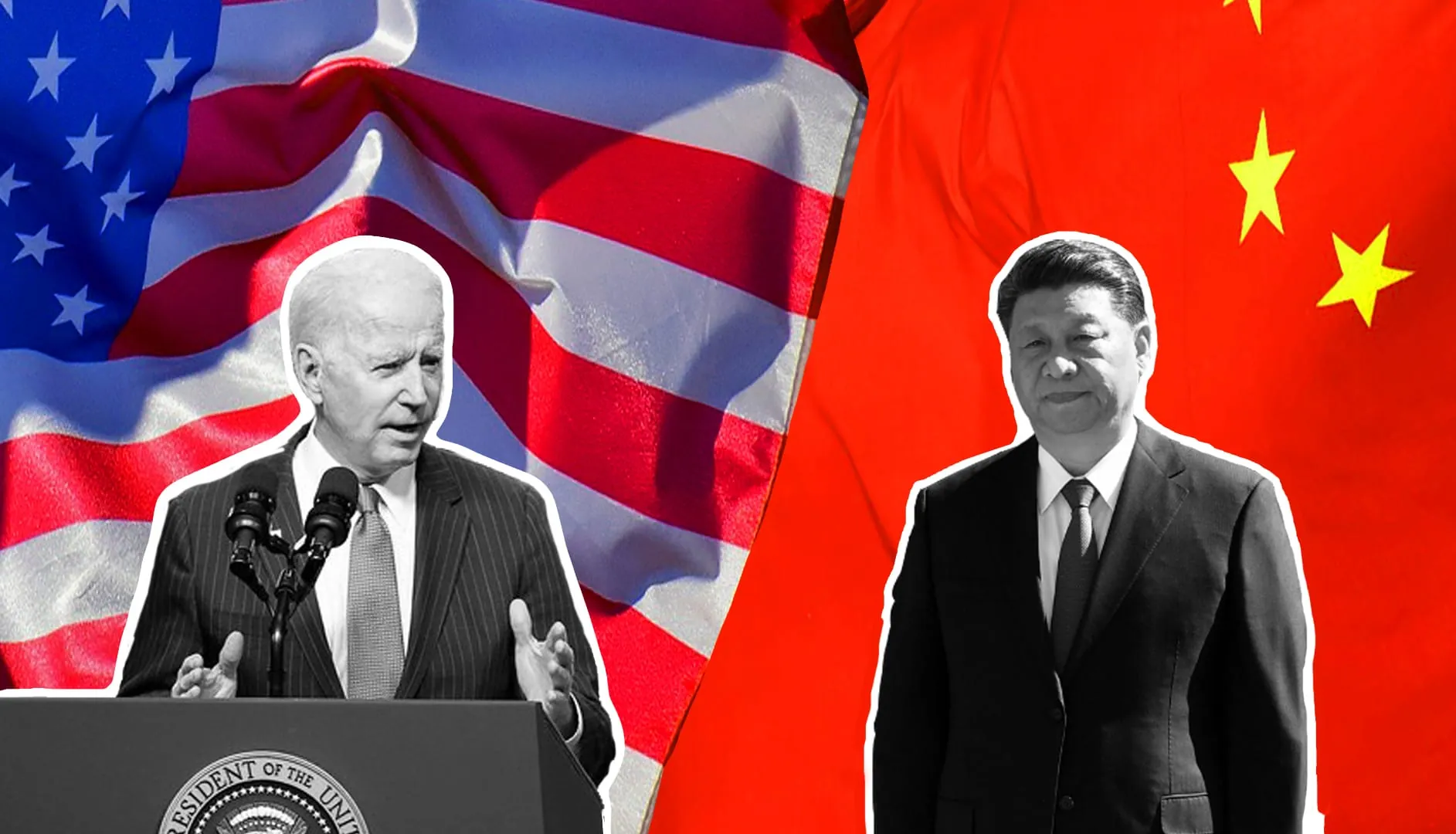Introduction
The global semiconductor industry is at a pivotal juncture, as China seeks to dramatically expand its semiconductor manufacturing capabilities.
According to a recent report by TrendForce, this expansion is driven by policies and incentives aimed at promoting local production and domestic integrated circuit (IC) development.
From 2023 to 2027, the global ratio of mature (>28nm) to advanced (<16nm) processes is projected to hover around 7:3, with China’s mature process capacity anticipated to grow from 29% in 2023 to 33% by 2027.
This ambitious undertaking is set to have profound implications for the industry, with a particular focus on specialty processes such as Driver ICs, CIS/ISPs, and Power Discretes.
1. The Driver IC Sector in Growing semiconductor industry of China
The Driver IC sector is a critical component providing essential components for display screens, touch panels, and power management.
In recent years, the focus within this sector has shifted towards high voltage (HV) with an emphasis on the 40/28nm HV process. This transition reflects the growing demand for more efficient and advanced driver ICs.
UMC, a Taiwan-based semiconductor foundry, has emerged as a leader in this segment. They have made significant strides in developing and manufacturing driver ICs based on the 40/28nm HV process.
GlobalFoundries, another prominent player in the semiconductor industry, closely follows UMC in this endeavor. These companies have been at the forefront of technological advancements and have successfully captured a substantial share of the market.
The Driver IC sector is swiftly changing due to the arrival of Chinese manufacturers, SMIC and Nexchip. These companies are heavily investing in capabilities, infrastructure, and R&D to bridge the technological gap with established foundries like UMC and GlobalFoundries.
The implications of this trend are both short-term and long-term:
Short-Term Implications:
Competition Intensification: The entry of SMIC and Nexchip into the 40/28nm HV process market intensifies competition. This competition could potentially lead to price wars as companies compete for market share.
Challenges for Competitors: Competitors with similar process capabilities and capacities, such as PSMC, now face heightened competition from Chinese manufacturers. The short-term challenge for these companies is to maintain their market position and defend their market share.
Impact on Smaller Players: Companies lacking 12 inch fabrication facilities, such as Vanguard and DBHitek, encounter immediate challenges. Transitioning to advanced processes can be costly, potentially posing financial barriers. To remain competitive, these firms may require strategic adjustments.
Long-Term Implications:
Market Share Redistribution: If Chinese manufacturers like SMIC and Nexchip successfully close the technological gap and maintain their competitive edge, they could gradually gain market share. This may lead to a redistribution of market dominance, impacting long-standing leaders like UMC and GlobalFoundries.
Innovation and Research: The competition in the Driver IC sector is likely to drive innovation and research in high voltage specialty processes. Established players, as well as new entrants, will invest in developing new technologies and improving existing ones, which could lead to more advanced and efficient driver ICs.
Global Dynamics: The long-term implications also have global ramifications. As Chinese manufacturers gain prominence in this sector, the dynamics of the semiconductor industry may shift, potentially influencing global supply chains and trade relationships.
Read More: Why SMIC Revenue from US Companies Increased Despite Ban?
2. CIS/ISP Advancements in Growing semiconductor industry of China
The realm of CIS/ISP (CMOS Image Sensor/Image Signal Processor) is a crucial domain within the semiconductor and imaging technology industries.
It involves the development of image sensors and accompanying processors used in various imaging applications. Examples include in smartphones, digital cameras, security systems, and more.
The recent developments in this sector, particularly with the emergence of 3D CIS structures, highlight an interesting transformation in the market.
3D CIS Structures:
The adoption of 3D CIS structures is a significant advancement in image sensor technology. A 3D CIS structure typically comprises two primary layers: a logic layer ISP (Image Signal Processor) and a CIS pixel layer. This structure allows for more efficient processing of image data and can enhance image quality, especially in low-light conditions. The integration of logic and pixel layers in a single package streamlines the image capture and processing pipeline, resulting in more compact and power-efficient image sensors.
Mainstream Processes:
In 3D CIS structures, there’s a clear distinction in mainstream processes. The logic layer ISP typically within the 45/40nm range, benefits from advanced semiconductor nodes for better performance and lower power consumption. Conversely, the CIS pixel layer mostly uses 65/55nm and above processes. These, while less advanced, still perform a crucial role in capturing high-quality images and converting light into digital data.
Market Leaders:
Industry giants like TSMC, UMC and Samsung have emerged as frontrunners in the production of 3D CIS structures. Their strong presence and expertise in semiconductor manufacturing have positioned them as key players in this sector.
Chinese Challengers:
Chinese companies, including SMIC (Semiconductor Manufacturing International Corporation) and Nexchip, have rapidly closed the gap with established players in the 3D CIS sector. This transformation is driven by several factors:
Partnerships with Smartphone Giants: Chinese companies have forged partnerships with major smartphone manufacturers such as OPPO, Vivo, and Xiaomi. These collaborations have provided a substantial market for 3D CIS technology, facilitating rapid growth and development in this sector.
Governmental Policies: Chinese companies are further motivated by government policies that promote local production. Policies aimed at supporting the domestic semiconductor industry have encouraged Chinese CIS/ISP manufacturers to invest in research, development, and production capabilities.
Ecosystem Growth: The ecosystem surrounding 3D CIS/ISP technology is expanding in China, with companies like OmniVision, Galaxycore, and SmartSens rallying behind local production. This ecosystem growth includes everything from sensor development to image processing, creating a comprehensive local supply chain.
Chinese companies in the 3D CIS/ISP sector show China’s aim to reduce dependence on foreign tech providers. Their efforts to narrow the technological gap and develop advanced image sensor technology are likely to foster innovation. This competition is expected to yield more advanced and cost-effective image sensors for a variety of applications.
Read More: Intel Unveils 3D CFET : The Future of Compact and Efficient Electronics
3. Rise of Power Discretes in Growing semiconductor industry of China
The Power Discretes sector has been traditionally dominated by established firms like Vanguard and HHGrace. These companies are renowned for delivering high-quality and efficient power semiconductor components vital in diverse applications. However, the sector is undergoing a significant transformation, driven by the entry of Chinese contenders.
This transformation carries several implications.
Increased Competition:
A wave of Chinese contenders, including HHGrace, SMIC, Nexchip, and CanSemi, is intensifying global competition in the Power Discretes sector. These companies come with strong support and significant investments in research, manufacturing infrastructure, and production capacity. Consequently, they are poised to challenge established players in the field.
Impact on Price Wars:
While price wars are a possibility, the ramifications of this shift extend beyond mere pricing competition. As Chinese contenders aim to gain a foothold in the market, they may engage in aggressive pricing strategies to attract customers. This can benefit consumers by driving down the cost of power discrete components, making them more affordable for various applications. However, it can also create pricing pressures for existing players, including Vanguard and HHGrace, who may find it challenging to compete solely on price.
Impact on Order Books and Clientele:
The entry of new players, backed by government support, can disrupt orders and clientele for Taiwanese and global manufacturers. Customers may shift to Chinese contenders due to competitive pricing and advanced technologies, potentially causing attrition among traditional manufacturers if Chinese products match or surpass quality.
Global Implications:
The rise of Chinese companies in the Power Discretes sector has broader global implications. China’s focus on supporting EVs and renewable energy aligns with global trends towards sustainability. The expansion of Chinese manufacturers in the market can play a vital role in the global transition to cleaner and more efficient energy systems.
This, in turn, has the potential to reshape the dynamics of the global power electronics market and influence the development and adoption of sustainable technologies.
Technological Innovation:
Investments by Chinese contenders in research and development can spur innovation in power discrete components, resulting in more efficient and reliable power semiconductor devices. These advancements offer benefits to industries that depend on these components.
Read More: Chinese AI Chips Prices Double Due to New US Export Controls
4. Global Implications of Growing semiconductor industry of China
The aggressive expansion of China’s semiconductor manufacturing capabilities is poised to have profound implications for the global semiconductor market. As China actively courts both global and domestic IC designers, several key dynamics are expected to come into play, reshaping the industry landscape.
Flood of Mature Processes:
One of the key consequences of China’s efforts is the potential influx of mature semiconductor processes into the market. Mature processes (>28nm) lack the performance and efficiency of advanced nodes, which have driven the global semiconductor market. However, China’s emphasis on mature processes risks flooding the market with older technologies.
This flood of mature processes has the potential to trigger a price war. As more manufacturers, including Chinese companies, produce chips using mature processes, competition for market share will intensify.
To gain an edge, companies may resort to aggressive pricing strategies, which could lead to lower semiconductor prices.
While this could be beneficial for consumers, it may also disrupt the market equilibrium and pose challenges for semiconductor manufacturers who rely on higher pricing to maintain profitability.
Localization Trends and Risks:
TrendForce highlights the emergence of localization trends in key semiconductor sectors, including Driver IC, CIS/ISP, and Power Discretes.
China’s emphasis on developing its domestic semiconductor industry signifies its intent to decrease dependence on foreign manufacturers.
Consequently, second and third-tier foundries, both domestically and internationally, may encounter issues related to client attrition and pricing pressures. Smaller foundries, even with similar capabilities, might see clients gravitating towards larger, more cost-effective Chinese competitors.
The combination of China’s preference for local production in its domestic market and government incentives further diminishes the attractiveness of non-Chinese foundries for chip sourcing.
Taiwan’s Position and the Role of Technological Prowess:
Taiwan has long been a global semiconductor manufacturing hub, with industry leaders renowned for their specialty processes and advanced technology.
However, the rise of China as a semiconductor manufacturing powerhouse is putting Taiwan’s industry leaders in a challenging position.
In this evolving landscape, Taiwan’s companies must rely on their technological prowess and efficient production yields to maintain their competitive edge.
They need to continue investing in research and development to stay ahead in advanced process technologies, develop innovative solutions, and provide high-quality services to retain their market share.
The competition ahead, particularly for Taiwan’s semiconductor industry, is not just about market share but also about preserving their technological leadership.
This involves maintaining the ability to offer cutting-edge solutions and efficient manufacturing that are still attractive to both domestic and global clients.
Read More: What are the Key Regulatory Changes by US in the Expanded Ban to China?
Conclusion
China’s ambitious expansion in the semiconductor industry is set to reshape the global landscape, with a focus on specialty processes. While the localization of IC manufacturing is a commendable goal, it also raises questions about how this expansion will impact global competition, pricing, and the balance of power in the industry. As Chinese companies rapidly advance in various sectors, the semiconductor market is poised for significant shifts in the coming years, and industry players must adapt to these changing dynamics.








